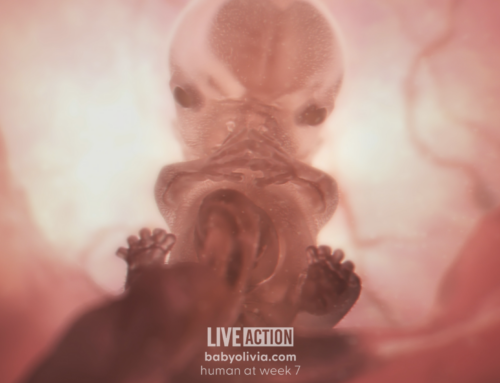The years since legalization of abortion in Canada have seen the gradual conversion of an act deemed to be a war-crime at Nuremberg to a public service and the “right” of women.
Many doctors have set aside their convictions and have participated fully in this attack on our preborn. Another large group in the middle continues to avoid personal involvement, but takes no action in eliminating abortion. I want to show that resistance to abortion continues among physicians, on an individual and a collective basis.
When it published its abortion policy in August 1988, the Canadian Medical Association (CMA) invited comments from the membership. The Catholic Doctors’ Guild of Toronto was one of the many Canadian organizations that responded. It censured the CMA for not consulting the doctors of Canada before it decided that abortion was simply a private agreement between mother and doctor and for ignoring the innocent third party.
In its submission, the Guild expressed its deep alienation from the CMA policy, and distanced itself from the description of abortion as a medical act. The Guild concluded with a Declaration of Intent to put professional ethics in the context of its spiritual identity.
Many doctors wrote letters in favour of the pro-life position – far more than the few which defended the CMA’s policy. But here I’d like to summarize all of the pro-life correspondence:
- The CMA policy is said to recognize “a woman’s right to full control of her fertility.” One correspondent compares this view to the adolescent’s. Right and wrong is what their friends think, what society says, and what laws permit. He says that doctors must get past this stage to higher ethical levels by applying the universal idea of justice to all stages of human development – from conception on.
- Another correspondent discounts the inclusion of abortion in those medical acts which aim to prevent or to control a pathological condition. Thus, the emotional distress which may surround a pregnancy is a psychological condition calling for psychological therapy, not the destruction of a preborn child.
- A pro-abortion letter ridicules the Oath of Hippocrates, because it refers to Apollo the Physician, and requires physicians to direct their lives in purity and holiness, and to abstain from seducing women and men. Be they slave or free. However, the pro-abortion doctor fails to distinguish between the terminology and the substance of the oath, says another correspondent. The words themselves wre appropriate for pre-Christian times, but the spirit of the oath is relevant for any age: “I will maintain the utmost respect for human life from the time of conception,” declares the 1948 Geneva Declaration.
- Another pro-abortion doctor compared the preborn child to a heap of iron ready to be turned into an automobile. A number of pro-life doctors replied to this debunked – but still dangerous – idea. They pointed out how all human life is at risk when, on the strength of an inappropriate analogy, some have less right to life than others. They also spoke of the hazard in conferring humanity in terms of days, grams or centimeters.
- Other pro-life doctors took aim at errors in fact. To the statement that “legal constraints [against abortion] first appeared in the 19th century in both England and North America,” one doctor responded with quotations from Assyrian law in 1450 B.C., from Cicero, and from Christian writers of the early Church in the first and second centuries. One of them, Tertullian, wrote that the fetus “is a man which is going to be one.”
I do not want to give readers a false sense of security. The battle for life in the medical profession has only just begun. It will not cease until principled and well-informed groups of physicians – like the Catholic Doctors’ Guild – have helped to return the medical profession from killing to healing.




